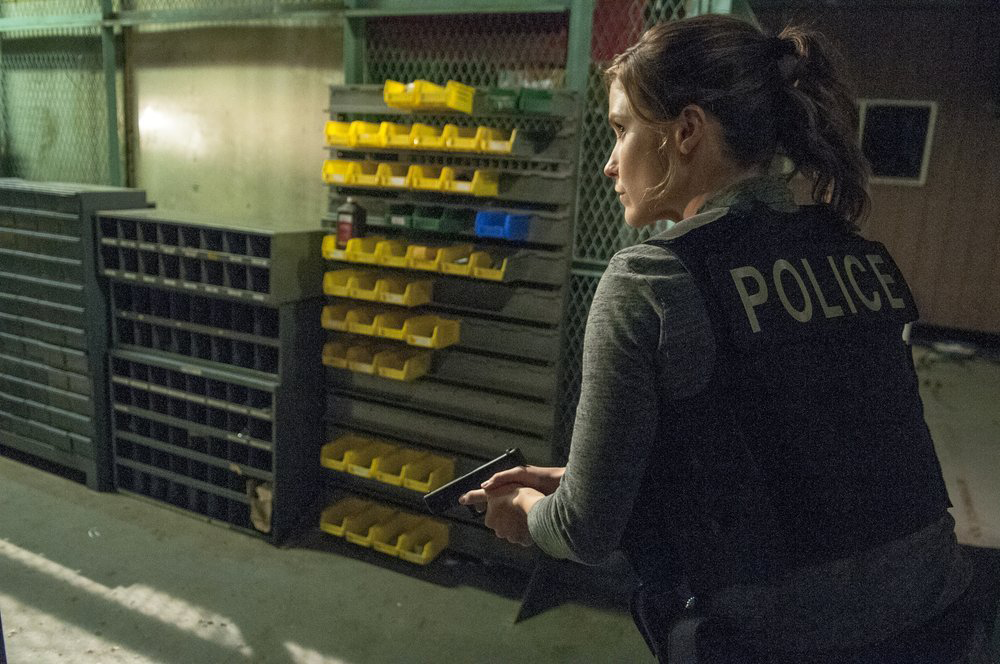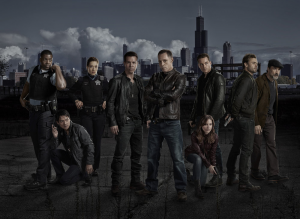
Chicago is in the midst of a television renaissance—in just the past few years, series like “The League,” “Boss,” and “Happy Endings” have called the city home. But the biggest new televisual presence in Chicago comes from the new franchise of Dick Wolf, the creator of “Law & Order.”
Wolf’s “Chicago Fire,” now in its second season, is a show focused on a fire station in Little Italy, and a bright spot for an otherwise struggling NBC lineup. “Chicago Fire” films and is set on the South Side. However, its new spin-off “Chicago PD,” a solid police procedural squarely in the style of Wolf, has far more reason to be concerned with representing the South Side, given its focus on the Chicago Police Department.
There’s a long history of TV shows set in Chicago—“ER” and “Chicago Hope” among them. But most of those shows are filmed in Los Angeles and merely pay lip service to their Chicago settings with establishing shots of the “L.” Even the ones that do film in Chicago generally avoid depicting the South Side in favor of the more upscale neighborhoods inhabited by the sorts of characters people tend to make television shows about.
Visually speaking, “Chicago PD” is a great and uncharacteristic (for network television) depiction of the South Side. Several aesthetic and logistical factors made it a natural place to do much of the series’ filming. Production designer Greg Van Horn says, “What I like about the South Side is that there’s a lot of diversity.” Shooting locations are immediately recognizable to residents as distinctively Bridgeport, Pilsen, or Washington Park. The production team has highlighted various South Side locations, from a bakery in Pilsen that serves as the family business of a major character to a Kenwood house on 46th and Ellis that Van Horn described as “grandmotherly,” and which houses a ring of cell phone thieves.
The producers claim that filming has been good for local businesses. Location manager Patrick Muldoon says, “Businesses are receptive to us coming in and filming, both to have their name on TV, and for the experience.” In particular, the production team cited Ciao Amore, an Italian restaurant in Pilsen, which has reportedly seen an uptick in business since they were featured on the show. Ciao Amore manager Gus Drugas confirms that “we have had some customers who have seen us on the show.” He also says that the production has supported other local businesses. “It’s been good for the community. It helps the local economy because people want to see the locations, so they come out and shop, people come and eat.”
The show’s protagonist, “shady” cop Hank Voight (Jason Beghe), has almost total control over his officers, who work a staggering variety of cases, from kidnappings to counterfeiting. Voight has a working relationship with a “gang” of middle-aged men in leather jackets who hang out under the “L” tracks on a thrown-out sofa. His officers have already engaged in police brutality, beating a suspect until he gives up a name.
An early subplot involves Voight taking an interest in a kid who finds himself part of a gang, trying to “get him out” of his neighborhood. Often, stories about bigger problems with institutions can be best told through specific individuals, but “Chicago PD’s” treatment of the same subject confines its gaze to Voight, sacrificing the child as a real character so the hero comes off better.
The series’ lack of engagement with the complex problems plaguing the Chicago Police Department and its relationship with South Side residents is by design. Executive Producer Danielle Gelber, also an executive vice president of Wolf Films, said, “We’re assiduously trying not to mirror what’s going on in true life Chicago. We don’t feel—and this comes from Dick Wolf on down—we don’t feel like we should make pronouncements on how the real CPD operates and what they’re up against.”
Even in its visual depiction of Chicago, the “Chicago PD” team is committed to creating a version of the city that works best on TV. Van Horn said, “In my head there’s sort of a map of Chicago, and if you think of it as almost like Disneyland, a very condensed map so that the neighborhoods bleed into each other—because, say, the 21st District would be a very small part of Chicago.” It wouldn’t make much sense for a network television show to meticulously document locations in particular neighborhoods of Chicago, but those shortcuts are also indicative of the type of Chicago that “Chicago PD” creates.
The comparison to an amusement park is apt—“Chicago PD’s” Chicago feels like a ride, presenting only the fun parts of the city with slight distortions. It might be difficult to give a full accounting of the city, but where “Chicago PD’s” visual compressing is forgivable, its treatment of the Chicago Police Department deserves a second look.

It might be unreasonable to expect a Dick Wolf show to seriously grapple with these issues—after all, “Law & Order” and its brethren take place in an almost fantasy-like world where the police are good people who do the right thing (and if not, it’s because they care too much about their work). The cops on “SVU” or “Criminal Intent” almost always catch the bad guy without dealing with racial profiling, rampant institutional gang violence, or unfair drug laws. And how could they? These series air on major broadcast networks, which means they can’t plumb the same depths as, say, FX’s cop anti-hero masterpiece “The Shield.” And, as Gelber noted, the “Chicago PD” team is “really focusing in on who our characters are as people more than we’re trying to rip anything from the headlines.” But those characters can’t do things that are too terrible, because millions of people would (at least theoretically) stop watching.
Network television shows do tend to take place in a sort of aspirational world, but “Chicago PD” markets itself as “dark” and “gritty,” suggesting at least some ties to the reality of the Chicago Police Department. For the “Chicago PD” team, that doesn’t entail any discussion of political issues. “Everything we do is grounded in authenticity, but we don’t want to be making a statement about Chicago violence and how it’s dealt with by the police department,” Gelber said. “Chicago PD’s” writers and producers may not want to connect themselves to the realities of the South Side, but such self-consciously “mature” storytelling combined with the show’s skill at capturing the visual and architectural diversity of the city make it very easy for viewers to get the wrong impression. And the in-universe reasons for the unit’s ethically suspect police work are eerily similar to the real justifications for police brutality and misconduct. Said Gelber of Voight’s shady tactics, “It all goes toward the goal of protecting the city.” This fits in with “Chicago PD’s” marketing campaign, which finds Voight, glaring, next to the words, “Don’t **** with my city.” One wonders: whose city, exactly?
